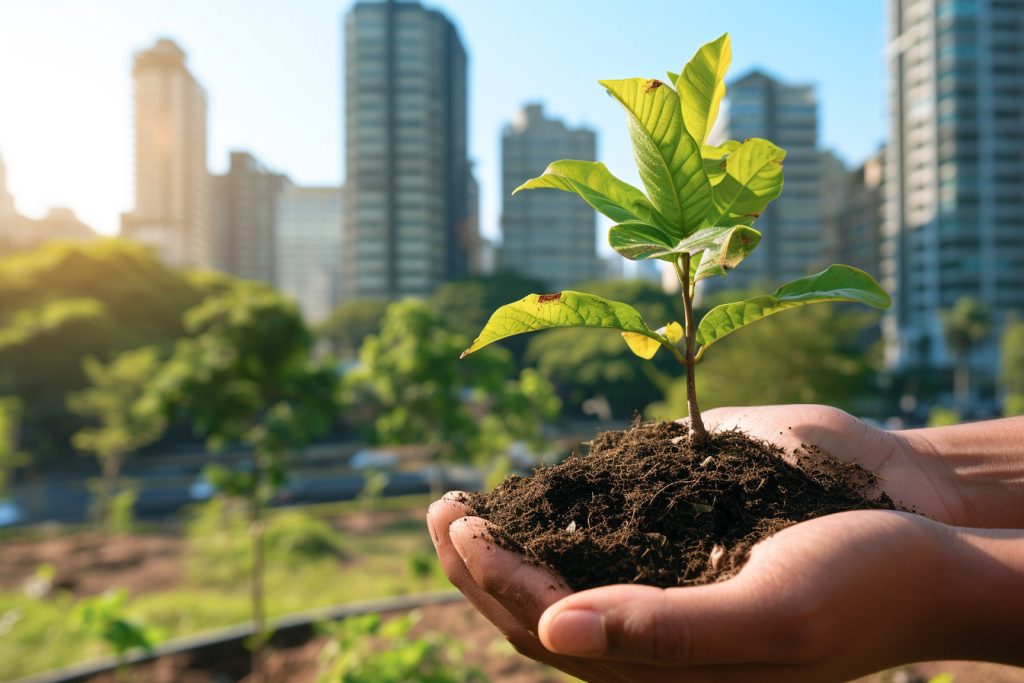Cities around the globe are increasingly being viewed not just as hubs of concrete and steel but as potential canvases for various shades of green. Amid concerns about climate change, pollution, and the often-overlooked need for natural beauty in urban areas, the concept of greening cities has sprouted up as a crucial component of sustainable development. This article delves into the world of urban greening, exploring the transformative potential of bringing verdure into the concrete maze and guiding you through the journey of creating sustainable landscapes in our bustling metropolises.
Urban Jungles: It’s Grow Time!
Forget the Tarzan-esque vines swinging between skyscrapers; the new urban jungle aesthetic is all about integrating plant life into cityscapes in a pragmatic and picturesque manner. Rooftop gardens, roadside planters, and lush vertical walls are just the start. These green interventions are more than just eye candy; they provide much-needed oxygen, enhance biodiversity, and help reduce the urban heat island effect. It’s grow time for cities to rethink traditional architecture and planning by incorporating green roofs, tree-lined streets, and community gardens as essential elements of urban infrastructure.
And it’s not just about planting trees at random. Effective urban greenery requires strategic planning to ensure that the benefits are maximized. This means selecting plant species that are resilient, low maintenance, and suitable for the city’s unique climate. It also involves understanding how green spaces can serve multiple purposes — from revitalizing underused spaces to serving as communal hubs for social interaction. As the climate clock ticks, it’s imperative to fast-track green designs that fuse ecological function with urban form, turning grey to green with intent and intelligence.
The Roots of City Greening
Digging deeper into the roots of city greening, we find that the movement isn’t just a response to contemporary ecological crises; it has historical precedence. In the 19th century, the push for public parks was born out of the need to offer urban dwellers respite from the densely populated, industrious city life. Central Park in New York City and Hyde Park in London emerged as lungs for their cities, offering oases of tranquility. These foundational green spaces have inspired generations to demand that nature not be the exception in cities but the rule.
However, the city greening of today extends far beyond the pleasure grounds of yesteryear. It interweaves functionality with beauty, creating habitats for wildlife, promoting sustainability, and enhancing mental health. Innovations in green architecture have led to buildings that clean the air, urban farms that feed residents, and green transport routes that encourage walking and cycling. These elements help to root sustainability into the urban fabric, creating ecosystems where humans and nature can thrive in symbiosis.
Paving the Way for Parks
In paving the way for parks, the concrete of yesterday is giving way to the grasses, playgrounds, and community spaces of tomorrow. The transformation of grey areas into green havens is not just an aesthetic choice; it’s a strategic move towards healthier, happier urban living. Cities are retrofitting unused land — from abandoned railway lines to derelict lots — into green spaces that serve as communal backyard for apartment dwellers who might not have one of their own.
This push for park space is also a matter of social equity. Access to green spaces shouldn’t be a luxury afforded to only the well-heeled neighborhoods. Initiatives like the Trust for Public Land’s 10-Minute Walk campaign are working to ensure that every person in urban America has a park within a ten-minute walk from home. By prioritizing the integration of parks and recreational areas in all parts of a city, we create a more inclusive urban environment where every citizen can enjoy the psychological and physical benefits of nature.
Greening our cities is not a fleeting trend but a fundamental shift towards sustainable urban living. This guide to sustainable landscapes has highlighted that planting the seeds of green infrastructure goes beyond beautifying our urban environments; it’s an essential strategy for ecological resilience. As cities continue to grow, the integration of green spaces will become increasingly vital. So let’s roll up our sleeves and get our hands dirty — for the sake of our communities, our health, and our planet. From the roots of historical parks to the modern spread of urban forests, the future is verdant, and it’s time for us all to dig in.









